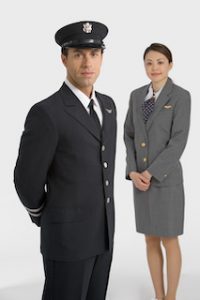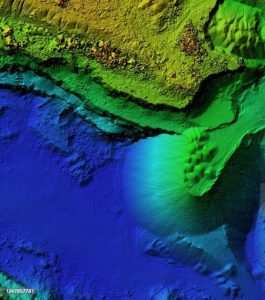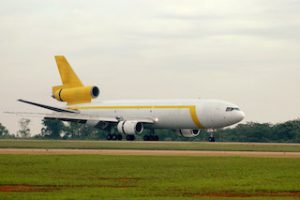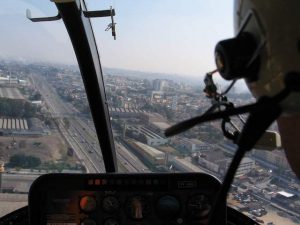Advanced Flight Techniques Taught in an APS – Airline Pilot Standard Course
 The Airline Pilot Standard (APS) course is a comprehensive training program designed to prepare pilots for the complex and demanding environment of commercial aviation. One of the most critical aspects of this course is the focus on advanced flight techniques. These techniques are essential for ensuring safety, efficiency, and proficiency in various flight scenarios. In this article, we will delve into the advanced flight techniques taught in an APS course, exploring what they entail and their significance for airline pilots.
The Airline Pilot Standard (APS) course is a comprehensive training program designed to prepare pilots for the complex and demanding environment of commercial aviation. One of the most critical aspects of this course is the focus on advanced flight techniques. These techniques are essential for ensuring safety, efficiency, and proficiency in various flight scenarios. In this article, we will delve into the advanced flight techniques taught in an APS course, exploring what they entail and their significance for airline pilots.
Precision approaches and landings
Precision approaches and landings are fundamental skills for any airline pilot. In an APS course, pilots learn to execute these maneuvers with a high degree of accuracy, even in challenging conditions. Precision approaches, such as Instrument Landing System (ILS) approaches, require pilots to follow specific glide paths and localizer signals to ensure a safe landing. The training includes practicing approaches in various weather conditions, including low visibility and crosswinds, to ensure pilots are well-prepared for real-world scenarios.
Key Components of precision approaches
- Instrument proficiency: Pilots must be adept at interpreting and responding to instrument readings. This includes understanding the nuances of the ILS, VOR, and other navigation aids.
- Stabilised approach criteria: Maintaining a stable approach path, speed, and configuration is crucial for a safe landing. The APS course emphasises the importance of adhering to stabilised approach criteria.
- Decision making: Pilots are trained to make timely decisions during approaches, including when to execute a missed approach if conditions are not suitable for landing.
Complex airspace navigation
Navigating complex airspace requires a deep understanding of air traffic control (ATC) procedures, flight management systems, and situational awareness. The APS course covers advanced navigation techniques, enabling pilots to operate efficiently in busy and controlled airspace. This includes understanding Standard Instrument Departures (SIDs), Standard Terminal Arrival Routes (STARs), and the intricacies of flying in congested airspace.
Elements of complex airspace navigation
-
- Flight planning: Detailed flight planning is essential for navigating complex airspace. Pilots learn to create accurate flight plans that account for airspace restrictions, weather, and traffic flow.
- ATC communication: Effective communication with ATC is critical. The APS course emphasizes clear and concise communication techniques to ensure pilots can effectively convey their intentions and understand ATC instructions.
- Use of advanced avionics: Modern aircraft are equipped with sophisticated avionics systems. Pilots are trained to use these systems to enhance situational awareness and navigation accuracy.
Handling adverse weather conditions
Weather is one of the most significant variables in aviation. The APS course provides extensive training on handling adverse weather conditions, including thunderstorms, turbulence, icing, and low visibility. Pilots learn to interpret weather data, make informed decisions, and execute appropriate manoeuvres to ensure the safety of the aircraft and its occupants.
Weather-related training components
-
- Weather interpretation: Pilots are trained to read and interpret weather reports, forecasts, and radar data. This knowledge is crucial for anticipating and avoiding hazardous weather.
- Turbulence management: Techniques for managing turbulence, including adjusting speed and altitude, are covered in detail. Pilots learn to maintain control and ensure passenger comfort during turbulent conditions.
- Icing procedures: Understanding how to recognise and respond to icing conditions is vital. The APS course covers de-icing procedures, use of anti-ice systems, and how to handle aircraft performance degradation due to icing.
Understanding advanced aerodynamic
A thorough understanding of aerodynamics is essential for executing advanced flight maneuvers safely. The APS course delves into the principles of aerodynamics, including lift, drag, thrust, and the effects of various flight configurations. Pilots learn how to optimise aircraft performance and manage aerodynamic forces during different phases of flight.
Key aerodynamic concepts
-
- Lift and drag management: Pilots learn techniques to optimise lift and minimise drag, enhancing fuel efficiency and aircraft performance.
- Stall recognition and recovery: Understanding the factors that lead to aerodynamic stalls and practicing recovery techniques are critical components of the APS course.
- High-altitude operations: Flying at high altitudes presents unique aerodynamic challenges. Pilots are trained to manage aircraft performance and ensure safety during high-altitude operations.
Emergency and abnormal situations
Handling emergencies and abnormal situations is a critical aspect of an airline pilot’s job. The APS course provides extensive training on various emergency scenarios, including engine failures, hydraulic system malfunctions, and cabin depressurization. Pilots learn to execute emergency procedures, manage resources, and maintain composure under pressure.
Emergency training scenarios
-
- Engine failures: Pilots practice handling engine failures at different phases of flight, including takeoff, cruise, and landing. The training includes single-engine operation techniques and emergency landing procedures.
- Systems failures: Understanding how to diagnose and respond to system failures, such as electrical or hydraulic malfunctions, is a key component of the APS course.
- Cabin emergencies: Pilots are trained to manage cabin emergencies, including medical issues, fire, and smoke. The training emphasises the importance of effective communication and coordination with the cabin crew.
Multi-crew coordination (MCC)
Effective coordination and communication within a multi-crew environment are crucial for safe flight operations. The APS course includes Multi-Crew Coordination (MCC) training, which focuses on enhancing teamwork, communication, and decision-making skills among pilots. MCC training ensures that pilots can work seamlessly with their colleagues to manage the aircraft safely and efficiently.
MCC training elements
-
- Role clarity: Pilots learn the specific roles and responsibilities of each crew member, ensuring clear delineation of tasks.
- Communication techniques: Effective communication is critical in a multi-crew environment. The APS course emphasises standardised communication protocols and techniques to prevent misunderstandings.
- Decision-making models: Pilots are trained in decision-making models that facilitate collaborative and informed decisions, especially in high-pressure situations.
Flight management system (FMS) mastery
Modern aircraft are equipped with sophisticated Flight Management Systems (FMS) that automate many aspects of flight planning and navigation. Mastery of the FMS is essential for efficient and safe flight operations. The APS course provides in-depth training on the use of the FMS, including programming flight plans, managing waypoints, and optimising fuel consumption.
FMS Training Components
-
- Flight plan programming: Pilots learn to input and modify flight plans using the FMS, ensuring accurate and efficient navigation.
- Performance management: The APS course covers techniques for optimising aircraft performance using the FMS, including fuel management and climb/descent profiles.
- System integration: Understanding how the FMS integrates with other aircraft systems, such as autopilot and navigation displays, is crucial for effective use.
Non-technical skills (NTS) development
In addition to technical proficiency, non-technical skills (NTS) such as leadership, communication, and situational awareness are critical for airline pilots. The APS course includes training on NTS to ensure pilots can effectively manage the human factors that influence flight safety.
NTS training elements
-
- Leadership: Pilots learn leadership skills that enable them to effectively manage the flight crew and make critical decisions.
- Situational awareness: Maintaining situational awareness is essential for safe flight operations. The APS course includes training on techniques for enhancing situational awareness, especially in complex and dynamic environments.
- Stress and fatigue management: Pilots are trained to recognise and manage stress and fatigue, which can significantly impact performance and decision-making.
Continuous learning and adaptation
A key component of the APS course is fostering a mindset of continuous learning and adaptation. The aviation industry is constantly evolving, with new technologies, regulations, and best practices emerging regularly. The APS course emphasizes the importance of staying current with industry developments and continually improving skills and knowledge.
Continuous learning strategies
-
- Professional development: Pilots are encouraged to pursue ongoing professional development opportunities, such as additional certifications, workshops, and seminars.
- Feedback and reflection: The APS course promotes a culture of feedback and reflection, where pilots regularly review their performance and identify areas for improvement.
- Adaptability: Pilots learn to adapt to changing circumstances and embrace new technologies and procedures, ensuring they remain proficient and effective in their roles.
Conclusion
The APS – Airline Pilot Standard course is a comprehensive training program that equips pilots with the advanced flight techniques and skills necessary for success in the demanding environment of commercial aviation. By focusing on precision approaches, complex airspace navigation, handling adverse weather, aerodynamic understanding, emergency procedures, multi-crew coordination, FMS mastery, non-technical skills, and continuous learning, the APS course ensures that pilots are well-prepared to meet the challenges of modern airline operations.
The advanced flight techniques taught in the APS course not only enhance safety and efficiency but also provide pilots with the confidence and competence needed to excel in their careers. Whether it’s executing a precision approach in challenging weather, navigating complex airspace, managing an in-flight emergency, or leading a multi-crew team, the skills acquired through the APS course are invaluable.
For aspiring airline pilots, the APS course represents a significant step towards achieving their career goals and ensuring the highest standards of aviation safety and proficiency. By investing in advanced training and continuously honing their skills, pilots can elevate their careers and contribute to the overall safety and success of the aviation industry.










